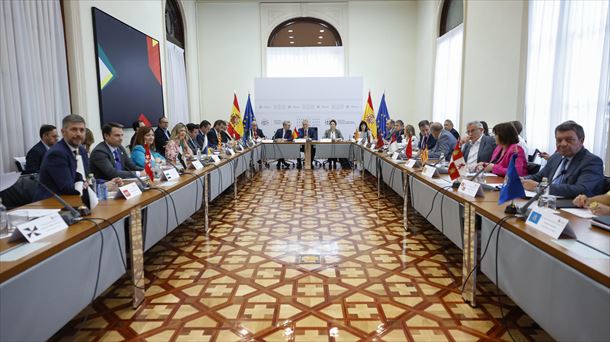For decades there was a bitter struggle for the autonomy of South Tyrol. Today she is a model. Foreign ministers yesterday commemorated the 30th anniversary of the Dispute Settlement Declaration.
On June 11, 30 years ago, then Foreign Minister Alois Mock presented a “dispute settlement statement” to the Italian ambassador in Vienna. The date was probably not chosen by chance: 30 years earlier, on the night of June 12, 1961, activists had blown up 37 electricity poles across South Tyrol (see below).
The background to this was South Tyrol’s autonomy, which was only partially realised, which the country was guaranteed in the Gruber-De-Gasperi Agreement in 1946 and in which Austria was given the function of protective power. Bruno Kreisky brought the issue of South Tyrol to the UN in New York in 1960 in his capacity as Foreign Minister.
Conflict was settled in 1992
Numerous rounds of negotiations later, Austria and Italy finally settled the conflict in June 1992. “The dispute settlement was the end of a complex process. A lot of human suffering has preceded it,” Austrian Foreign Minister Alexander Schallenberg said yesterday at an anniversary event in Bolzano, which South Tyrolean governor Arno Kompatscher (SVP) had invited.
“It was a time full of problems and obstacles, with violence and counter-violence, with bitter pain, hope and disappointment. We are also commemorating these circumstances today,” Schallenberg said in the presence of his Italian counterpart Luigi Di Maio.
South Tyrol today a European model
The autonomy of South Tyrol is now regarded as a European model and an excellent example for the mutual resolution of minority issues”, emphasized Schallenberg and stimulated discussions about further enlargement: the ideal situation was only reached when he had “nothing more to do than that”. everything is going great”.
In 1948, Rome issued the first statute of autonomy, but at the same time began to “italize” South Tyrol. After Kreisky’s intervention at the UN in 1960, it was not until 1972 that the second Statute of Autonomy was achieved. This was considered implemented in 1992.
Background: The long echo of the night of bombing
Despite the protection agreement of 1946 and the statute of autonomy of 1948, the German language was subordinated to Italian in the years that followed. Italian candidates were given priority in the awarding of public positions.
Discontent grew, radical groups tried to enforce their demands by force: in 1956 the first facility bombings took place, which then culminated in the “Heart of Jesus Night” from 11 to 12 June 1961: 37 electricity pylons were targeted blown up, 19 of them in the Bolzano area. In another action, overhead wires were blown up so that long-distance trains stopped on the open route.
The killers’ aim was to pressure Italy and draw international attention to the “South Tyrol problem”. Italy took action and arrested more than 150 activists, some complaining of torture. 94 were charged with murder in 1963 because a road worker was killed when he found a bomb.
Source: Krone
I’m an experienced news author and editor based in New York City. I specialize in covering healthcare news stories for Today Times Live, helping to keep readers informed on the latest developments related to the industry. I have a deep understanding of medical topics, including emerging treatments and drugs, the changing laws that regulate healthcare providers, and other matters that affect public health.



